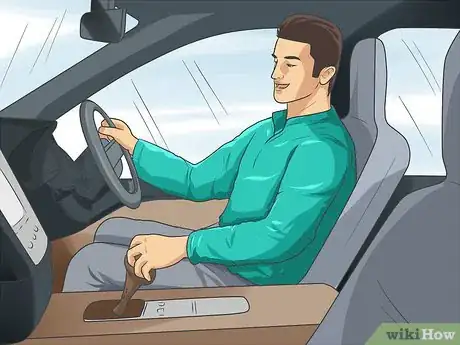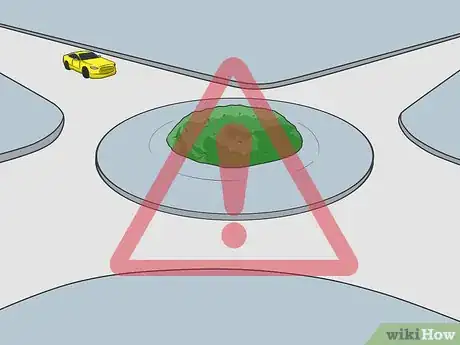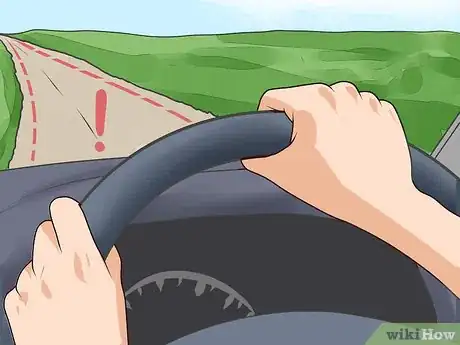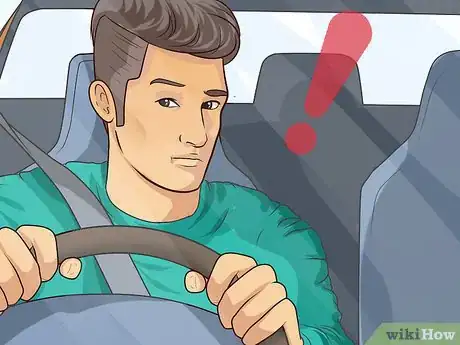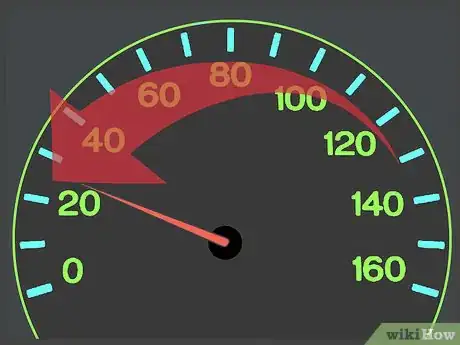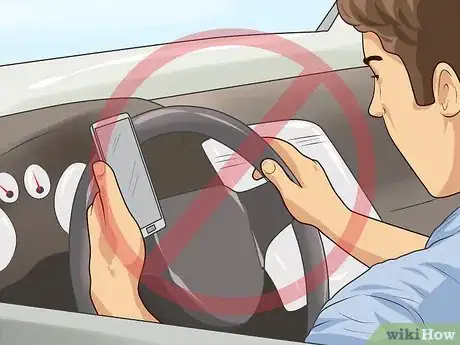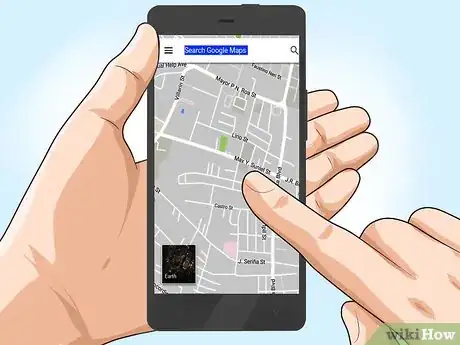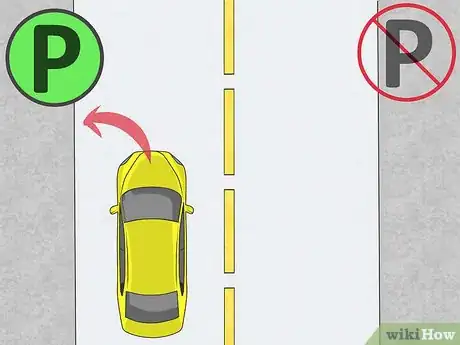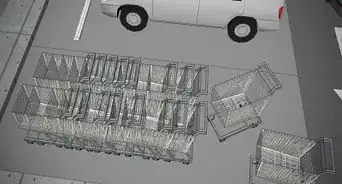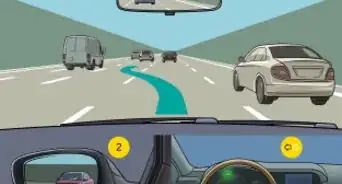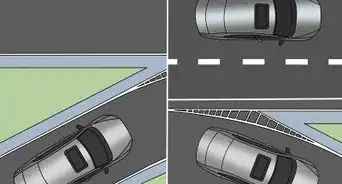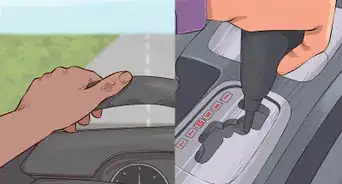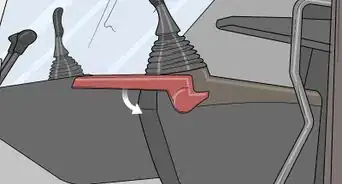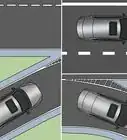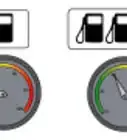This article was co-authored by Jacqueline Regev. Jacqueline Regev is a Driving Instructor and the Founder & CEO of Bubble of Safety Driving School. With over 20 years of education experience, she specializes in encouraging people to develop their skills to become safe and courteous drivers. Jacqueline earned a Bachelor's Degree from UCLA and an MA from Chapman University. She is also pursuing a PhD from UC Santa Barbara.
There are 8 references cited in this article, which can be found at the bottom of the page.
wikiHow marks an article as reader-approved once it receives enough positive feedback. In this case, 100% of readers who voted found the article helpful, earning it our reader-approved status.
This article has been viewed 220,866 times.
Even though about 75% of the world’s drivers are used to driving on the right side of the road, many countries still drive on the left. This can be disorienting to get used to, so it is necessary to do a little extra preparation before getting out on the road. By taking a few precautions before you drive, like testing out all of the controls and settling in, and adjusting the way you drive, like going slower and getting rid of distractions, you can adjust to a totally new way of driving.
Steps
Adjusting to the Car
-
1Find out about the car. Learning what type of car you are going to drive is important. If you are taking a trip where you’ll be driving on the left-hand side of the road, then you will most likely be hiring a car. Call the car hire company prior to going on holiday, and find out if they have both manual and automatic cars available. Even if you are used to driving manual cars, considering hiring an automatic to make the adjustment easier.[1]
- If you are only familiar with one method, it’s best to try and stick to that so you are only learning one new thing at a time.
- Also consider finding out about, if possible, what specific kind of car you will be driving (it's make and model), to help you get a feel for it.
- Many countries that drive on the left-hand side tend to have more manual cars than automatics, so you may find it more expensive to hire an automatic car.
-
2Pick up the car in a rural or quiet location. If you are learning to adjust to driving on the left-hand side of the road, you are most likely in a foreign country. Learning this new way of driving in a city with heavy traffic can add to the stress of the situation, so it is helpful whenever possible to pick up your car in a quieter location.[2]
- You may have to pick a different rental company, or see if they will deliver the car to your location. The benefit of this is that you will have more open roads to get used to, rather than densely packed cities with tight streets.
- If you can’t pick it up outside the city, see if you can pick it up close to the outskirts rather than in the centre, so that way you can head out of the city immediately.
- You can practice driving in an industrial or commercial area on the weekends to make sure that you have hearing control and the ability to stop to avoid the hazards.
- Then practice driving safely in a neighborhood setting.
- After you are confident that you can control the vehicle, you can start driving on two-lane streets with higher speeds.
Advertisement -
3Get a feel for the car. Once you are in the driver’s seat, you should take some time to get acquainted with the setup and functions of the car. The gearstick is going to be on your left side now instead of on the right. The indicators, windscreen wipers, and headlight controls may be on the opposite side of the steering wheel as they were before you went away. Testing these controls before you drive is essential for both the safety of yourself and other road users.[3]
- Even in cars with the steering wheel on the right-hand side, the clutch, brake and accelerator are still in the same position as left-hand side vehicles. Still, your right leg will be against the door rather than against the middle console or in the open. Get used to the feel of having your right leg against the door.
Following the Customs
-
1Beware of roundabouts. Roundabouts are a frequent part of driving in European countries; especially France and the United Kingdom. You’ll see some traffic lights, but you most likely understand how these work. Roundabouts may be a bit more challenging, even if you have driven on them in your home country. The added difficulty of the driving on the left can make the idea seem a little more daunting. Roundabouts are designed to be safer than traffic lights and they allow traffic to keep slowing rather than stop completely.[4]
- Always give way to those already using the roundabout. They have the right of way.
- You have to pick the lane you want to use and stay in that lane until you exit the roundabout. Look for signs before entering the roundabout that direct you to which lane you should use; if the roundabout has multiple lanes. The lane more to the right is essentially for those who are making a right turn. The left lane, then, is for those who are using one of the three or more other roadways.
- The main thing to remember at first is just to slow down and be cautious until you get the hang of the roundabout. Try to watch the other traffic and mimic what they are doing.
-
2Pay attention to narrow roads. On roads with one two lanes, one going in each direction, you always want to pay attention to how wide the roadway is and stay close to the outside. Sometimes you may have to inch off the road a little to allow other vehicles to pass you.[5]
- This can be especially tricky on streets that have cars parked at the sides. Sometimes you will need to pull up at the side and stop and give way to traffic coming from the opposite direction. Likewise, locals will often let you pass them as well.
-
3Drive defensively. Some countries have local customs that can include breaking traffic laws. Red lights may be discretionary, and if a driver sees that no-one is coming they may pass through the red light anyway. You still want to know the laws, but you can begin to adapt to the local practices by paying attention. Still, you are the only one who has your safety and best interest in mind, so being over-cautious and defensive while you drive is probably still best.[6]
Succeeding on Your Drive
-
1Drive slower than you usually would. When you are learning to do almost anything, slowing down is usually pretty helpful, and this is definitely true when adjusting to a new way of driving. Since you will be looking at the road from a new vantage point, it’s possible that your reaction time will be a little slower than it was before. If you are driving fast, then this will only make your slow reactions seem worse.
- Don’t be afraid to go slower while you get the feel of this new way of driving. People may get up close behind you, so it’s not a bad idea every so often to pull off to the side and let those people pass you. It is better to have a few people angry at you and to take more time on your first drive than to go faster than you can handle; which could cause an accident.
-
2Minimise your distractions. A lot of drivers tend to get in the groove of driving and often let themselves multi-task while they drive. You may be used to adjusting the stereo system, looking at your phone to text or navigate, reaching behind you to find something in the back seat, or eating a quick lunch on your commute. Don’t do all that, focus on the road.[7]
- Consider whether or not you think you might need to do these things and specifically do them before you get going.
- It can also be a good idea to do without listening to the radio on your first driving trip.
-
3Familiarise yourself with the route and plan your navigation. You most likely don’t know the roads when you are starting to drive on the left-hand side, so it can be really helpful to learn the basics of the journey you are about to make.
- Before you start your journey, study the map and try to have a good idea of where you are going. If it is possible to set audio navigation on either your mobile phone, the car itself, or a satellite navigation (sat nav) system, do so. Having the route clearly defined will free you up to focus only on driving properly.
-
4Use the buddy system. If at all possible when learning to drive on the opposite side of the road from which you are used to, it is good to bring another passenger who can help you remember to stay on the correct side of the road. They can also act as navigator and help you find your way. However, this will not always be possible, but it’s a good idea if you can manage it.
- Having someone else accompanying you is also really helpful when you go to park for the first time. You may very well have to parallel park, which tends to be easier if you have someone who can guide you.
- Plus, if you are particularly nervous about making this driving adjustment, having someone to talk to and keep you calm will be invaluable.
-
5Pay attention when pulling out of car parks. If you are used to driving on the right-hand side of the road, then pulling right out of a car park means pulling into the lane that is closest to you. On roadways where you drive on the left, now pulling out to the right means you are crossing oncoming traffic. Make sure you check to your right (the oncoming lane) before pulling out into the left lane.[8]
- This also means that pulling out left means you will pull into the left lane closest to you, assuming the road only has two lanes. This will feel unsettling at first, so just take an extra breath and an extra look to remind yourself what you are doing.
- When you are getting used to this, deliberately look at the roadway a couple extra times to firmly remind yourself where you are at in traffic and whether or not you are crossing oncoming traffic to get to your lane.
Community Q&A
-
QuestionWhere is the clutch in a RHD car
 Community AnswerThe order of the pedals is the same on either side of the car. The order goes clutch (furthest left), brake (middle), accelerator (furthest right).
Community AnswerThe order of the pedals is the same on either side of the car. The order goes clutch (furthest left), brake (middle), accelerator (furthest right). -
QuestionAre there any videos that will help me adjust to driving on the left side of the road?
 Community AnswerHere is a great one specifically for roundabouts, which can be pretty tricky. https://www.youtube.com/watch?v=Diu1k_5H45k This one gives some general tips: https://www.youtube.com/watch?v=2LabA6agmDI.
Community AnswerHere is a great one specifically for roundabouts, which can be pretty tricky. https://www.youtube.com/watch?v=Diu1k_5H45k This one gives some general tips: https://www.youtube.com/watch?v=2LabA6agmDI.
Warnings
- If you feel uncomfortable, don't drive long distances. Either take a breather and plan your approach wisely, or let someone else drive instead if possible.⧼thumbs_response⧽
References
- ↑ https://travelversed.co/tips-and-tricks/7-tips-for-driving-on-the-left-side-of-the-road/
- ↑ http://www.changesinlongitude.com/tips-to-drive-on-the-left-side-of-the-road/
- ↑ http://www.travelyourself.ca/cailins-blog/learning-to-drive-on-the-wrong-side-of-the-road/
- ↑ https://wsdot.wa.gov/travel/traffic-safety-methods/roundabouts
- ↑ https://www.ricksteves.com/watch-read-listen/read/articles/driving-in-great-britain-and-ireland
- ↑ https://www.ricksteves.com/travel-tips/transportation/driving-europe-tips
- ↑ http://www.bootsnall.com/articles/10-09/top-tips-for-driving-on-the-wrong-side-of-the-road.html
- ↑ http://www.stylehiclub.com/tips-general-travel/drive-on-the-left-side/
About This Article
If you’re used to driving on the right side of the road, it can be hard to adjust to driving a car on the left side of the road, but you can get more comfortable. To ensure you’re safe as you get used to the feeling, practice in a quiet, rural location without a lot of traffic. Spend some time getting familiar with the controls inside the car before you start driving. Once you do hit the road, drive slower than you normally would, and avoid talking on the phone, texting, or eating so you can focus on your driving. Keep reading to learn how to handle a roundabout while driving on the left side!


